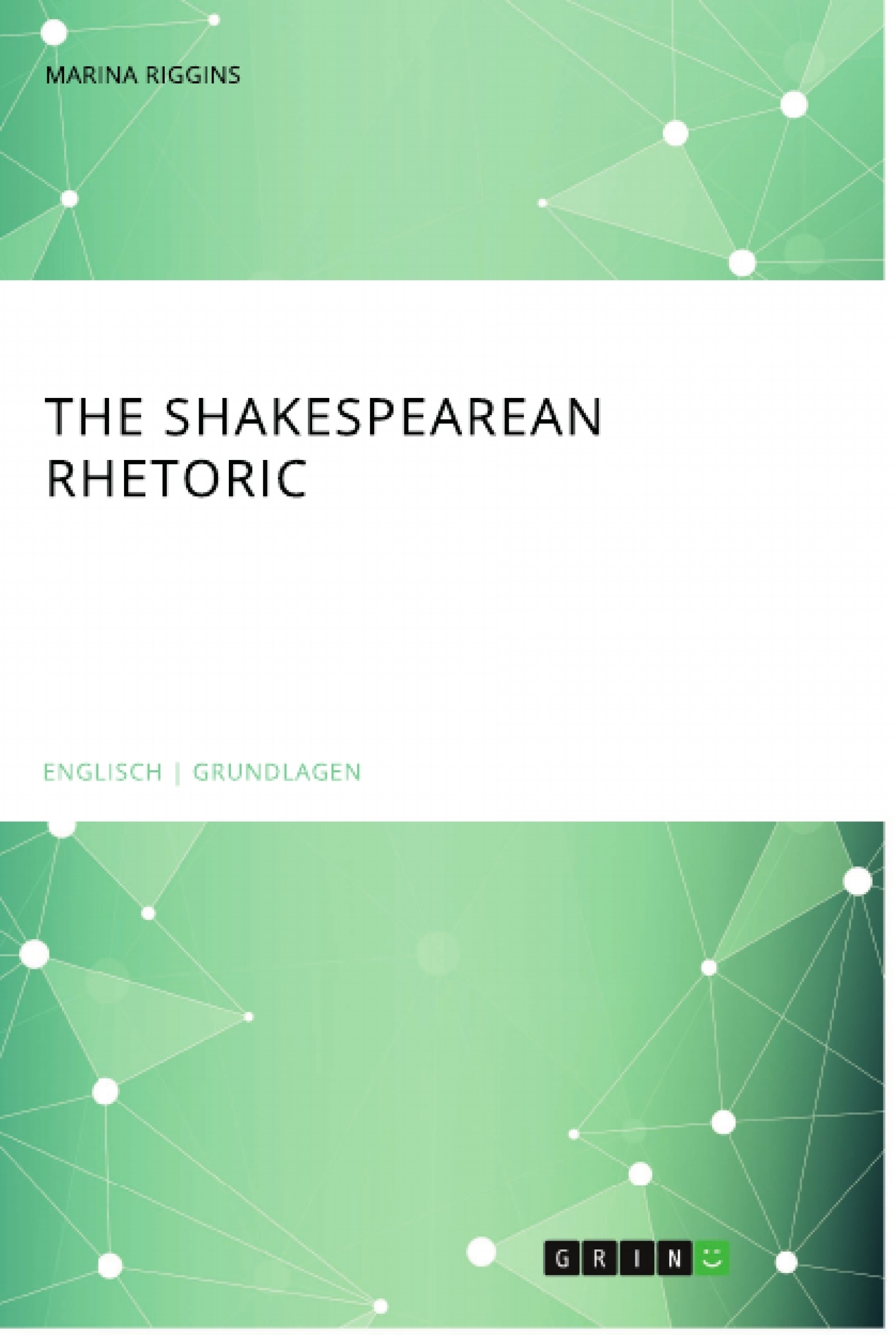This paper will investigate the fact that even if Shakespeare did possess a great knowledge of classic rhetorical concepts, something that was a normal part of the literary studies during his lifetime; he did not follow the concepts precisely. Did Shakespeare create his own rhetoric? His critical weapons in fact were the figures of language, which he used in a very effective and persuasive manner, such as personification, malapropism, metonymy, and rhetorical questioning, among others. Rhetoric after all is the art of effective use of language, which can be very persuasive, and, one must always keep in mind the reasons for its use and the goals it seeks to achieve. In order to illustrate the point of this paper, the following characters and works, will be looked at: Hamlet, Falstaff and prince Hal from "Henry IV", and Dogberry from "Much Ado About Nothing".
Inhaltsverzeichnis (Table of Contents)
- Shakespearean Rhetoric
- Shakespeare’s mastery of rhetoric
- Characters
- Figures of language
- Shakespeare and his audience
- High style and Shakespearean rhetoric
Zielsetzung und Themenschwerpunkte (Objectives and Key Themes)
This paper explores the use of rhetoric in Shakespeare's plays, examining how he deviated from classical rhetorical concepts and developed his own unique style. It focuses on how Shakespeare's figures of language and dramatic techniques, particularly in his use of “play-within-a-play” and variations in language based on social status, contributed to his ability to engage and move his audience.
- Shakespeare's unique use of rhetoric, departing from classical concepts
- The role of figures of language (tropes) in Shakespeare's plays
- The impact of social status and language on character portrayal
- The effectiveness of "play-within-a-play" and other dramatic techniques
- The relationship between rhetoric, audience engagement, and emotional impact
Zusammenfassung der Kapitel (Chapter Summaries)
The first section of the paper introduces the concept of Shakespearean rhetoric and its connection to classical rhetorical theory. It also discusses the importance of Shakespeare's audience, considering the diverse social groups he addressed.
The second section delves into specific figures of language used by Shakespeare, such as metonymy, personification, and rhetorical questioning. It provides examples from Hamlet, demonstrating how these figures of speech contributed to the emotional and intellectual impact of the play.
The third section examines how Shakespeare's use of language, tone, and dramatic techniques, including the concept of "high style" and the strategic use of pathos, enabled him to engage and move his audience.
Schlüsselwörter (Keywords)
This paper explores the key concepts of Shakespearean rhetoric, figures of language (tropes), including personification, metonymy, malapropism, and rhetorical questioning, the relationship between language and social status, and the impact of Shakespeare's dramatic techniques on audience engagement.
- Citar trabajo
- Marina Riggins (Autor), 2018, The Shakespearean Rhetoric, Múnich, GRIN Verlag, https://www.grin.com/document/540898



